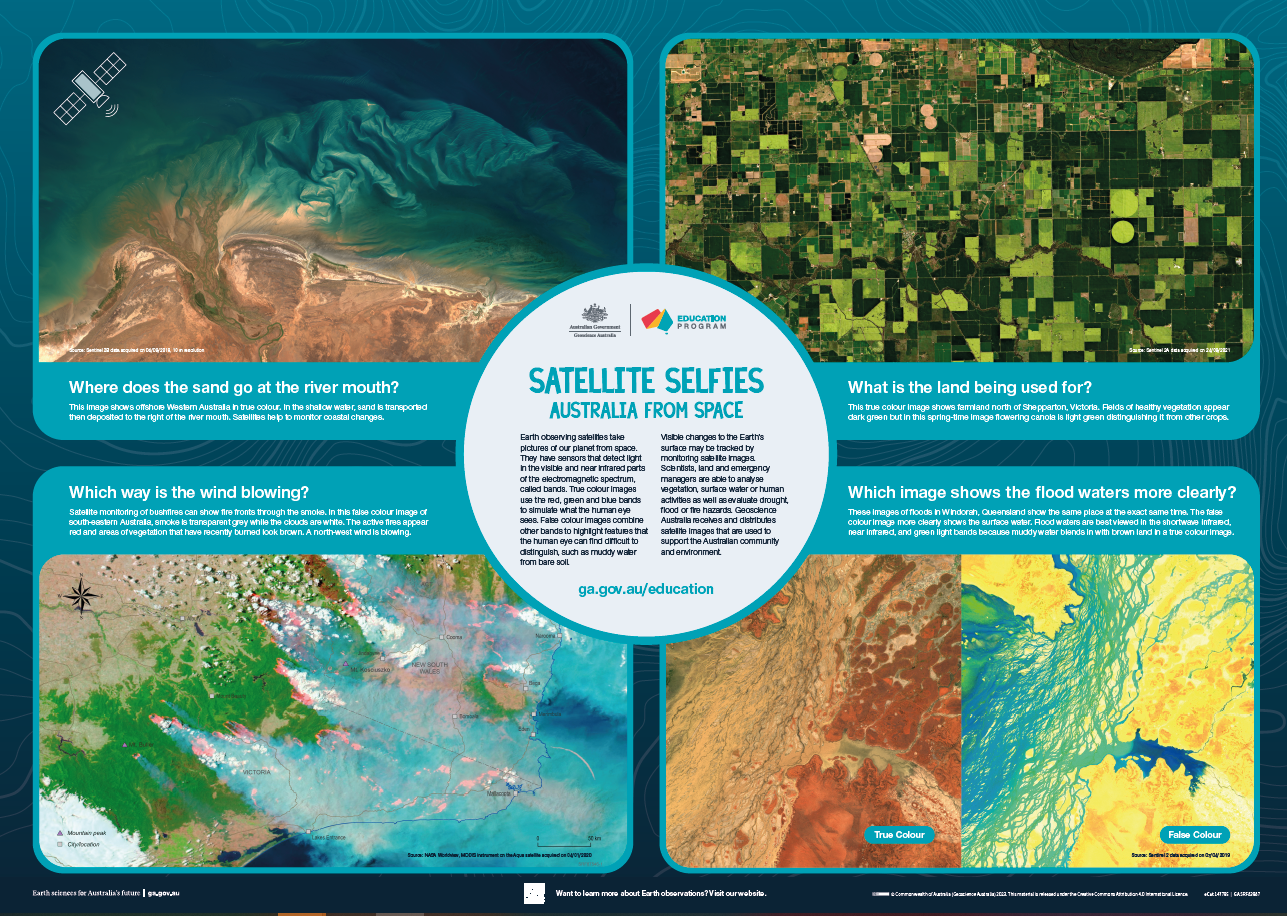Education
Type of resources
Keywords
Publication year
Scale
Topics
-
<div>The A1 poster incorporates 4 images of Australia taken from space by Earth observing satellites. The accompanying text briefly introduces sensors and the bands within the electromagnetic spectrum. The images include examples of both true and false colour and the diverse range of applications of satellite images such as tracking visible changes to the Earth’s surface like crop growth, bushfires, coastal changes and floods. Scientists, land and emergency managers use satellite images to analyse vegetation, surface water or human activities as well as evaluate natural hazards.</div>
-
This document contains a summary of and links to Geoscience Australia's resources appropriate for the teaching of Year 4, 6, 8 and 9 Earth and Space Science.
-
This is a mixture of maps and text explaining the area in fairly straightforward language.
-
This bulk set comprises 10 copies of the Rockhampton River 1:100 000 topographic map and 10 copies of the Jacobs River 1:100 000 topographic map. These are the same maps that are included in the Topographic Map kit, catalogue item # 23002. The maps can also be used with the bulk set of 10 Topographic Map student manuals (catalogue item 30836) and the Introduction to Topographic Maps (catalogue item 23001). Suitable for secondary years 7-12.
-
Please contact education@ga.gov.au for information regarding the availability of this product.
-
CAML is a five year International Program which will be undertaken as a major activity during the International Polar Year. This project will bring together all known data on Antarctic marine biodiversity and ocean change. The Antarctic Ocean is one of the most sensitive ecosystems in the world. Research undertaken via CAML will produce fascinating images of the Southern Ocean Geoscience Australia's Marine and Coastal Group is contributing expertise in sea floor mapping and sediment core collection to CAML. The Australian Government Antarctic Division is collecting oceanographic data, video footage and sediment cores through hot-water drill holes in the Amery Ice Shelf. The sediment cores are collected using a corer designed and built by Geoscience Australia, and are being analysed by scientists at Geoscience Australia to understand the environmental history beneath this ice shelf. This project has now produced four cores. The only other core ever obtained from beneath an extant ice shelf from under the Ross Ice Shelf in the early 1970s showed no signs of life. However, several Amery cores contain diatom-rich sediments, and one contains a succession of benthic faunas that indicate progressive colonisation of the sub-ice sea floor as ice retreated and currents began to seep nutrients and plankton into the sub-ice shelf cavity.
-
No abstract available
-
Australia - Evolution of a Continent: Palaeogeographic Atlas
-
A new National Fleet of Ocean Bottom Seismometers to understand the structures deep beneath the ocean floor and how the continental plates are moving and what resources may lay under the ocean floor.
-
3D images and text describing Australia's Southeast Marine Region

